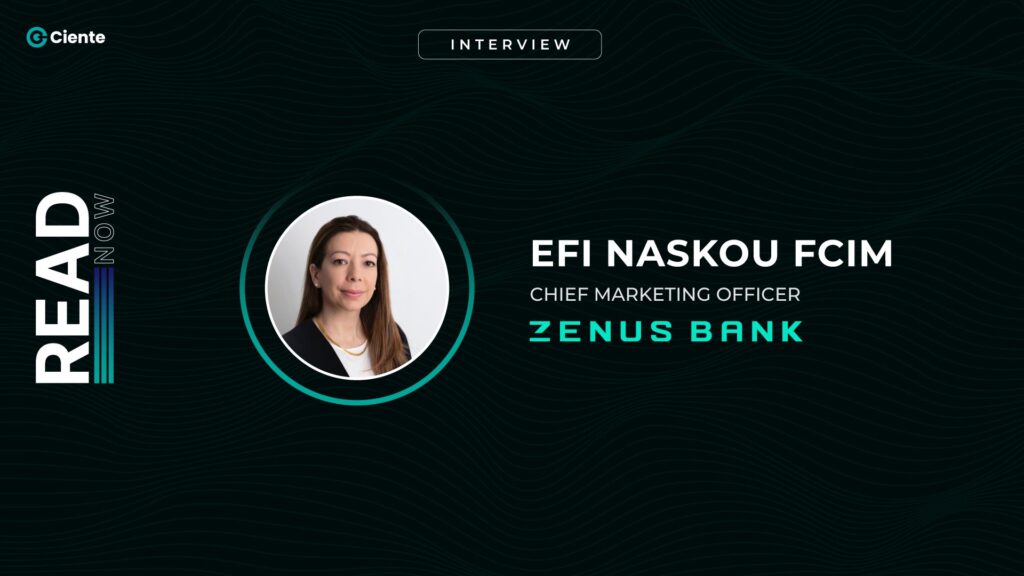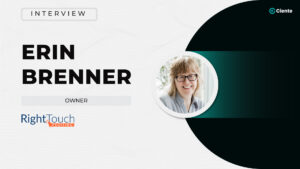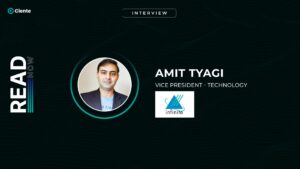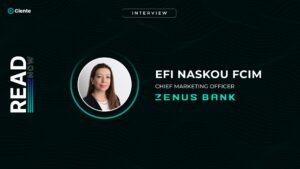Can you elaborate on your role as the Chief Marketing Officer at Zenus? What are your key responsibilities and focus areas?
As a CMO, I wear many hats, but they all tie back to one goal: growth. I build our brand, attract customers, launch products, and lead a rockstar team – all focused on driving results.
Think of me as the brand cheerleader, ensuring consistency and a great reputation. But awareness alone doesn’t pay the bills, so I also craft strategic marketing plans, choosing the right channels to reach our audience.
New products are like exciting debuts, and I work closely with our team to ensure a smooth, impactful launch. We generate buzz, fuel excitement, and get them in front of the right people.
Of course, customers are the real stars. I design campaigns that grab their attention, build loyalty, and leverage data to personalize their experience. It’s all about understanding their needs and creating that “wow” moment.
But a CMO is nothing without a team. I build a diverse, collaborative group where everyone shines, fostering an environment where ideas flow freely. Together, we’re a marketing powerhouse.
And the show never ends! I track everything, analyze data, and share results transparently. Think of me as the data detective, constantly fine-tuning our approach.
But I’m not just about playing it safe. I stay ahead of the curve, exploring new trends, technologies, and how people behave. I push boundaries and embrace innovation, keeping our marketing fresh and captivating.
So, being a CMO is demanding, yes, but incredibly rewarding. It’s about leading the way, building something strong, delivering results and having a say in the company’s future – all with a laser focus on growth. And I wouldn’t have it any other way.
How has your experience at Mastercard, HSBC, and Barclays contributed to your current role at Zenus?
Reflecting on my career trajectory, the experiences garnered at HSBC, Barclays, and Mastercard have been instrumental in shaping my approach and expertise in my current role at Zenus. At HSBC, I was immersed in the digital transformation of financial services, where I played a key role in launching and scaling innovative financial products and services. This experience was foundational, teaching me the importance of digital agility and the power of a global perspective in product management and marketing strategies. It equipped me with a robust understanding of digital platforms and the complexities of managing large-scale, global initiatives.
Moving to Barclays, my focus shifted towards enhancing brand strategy, communications, content strategy, digital marketing, and optimizing customer journeys. Here, I developed a nuanced understanding of market dynamics and customer engagement strategies. The role at Barclays was pivotal in refining my skills in storytelling and brand positioning, allowing me to craft compelling narratives that resonate with diverse audiences and drive meaningful engagement and growth.
At Mastercard I worked with numerous issuers, merchants, small and large organisations at different growth phases – my experiences culminated in mastering the art of leveraging data and insights to drive customer-centric solutions and business growth. The exposure to cutting-edge data analytics and customer insight strategies at Mastercard enriched my skill set, enabling me to develop and implement marketing solutions that not only meet but anticipate customer needs, thereby fostering growth and innovation.
These sequential roles have collectively contributed to a rich tapestry of skills and insights that I bring to my position at Zenus. My journey through HSBC, Barclays, and Mastercard has ingrained in me a deep understanding of the financial services landscape, digital innovation, and the critical importance of customer-centricity. At Zenus, I am able to draw upon this diverse background to lead our marketing efforts, ensuring that we stay ahead of industry trends while delivering exceptional value to our customers.
This narrative exemplifies a broader truth about the impact of past experiences on shaping one’s future roles and successes. It’s not just the skills and knowledge we accumulate, but also the adaptability, strategic thinking, and customer-focused approach we develop along the way that prepare us for future challenges and opportunities. These experiences become the lens through which we view and navigate the complexities of our roles, enabling us to make informed decisions and drive innovation in our respective fields.
Could you share some examples of successful marketing strategies you’ve developed and executed in the financial services sector?
Marketing in the financial services sector requires a nuanced understanding of regulatory constraints, consumer trust issues, and the unique value propositions of financial products. Here are some effective marketing strategies I’ve implemented or observed in this industry:
Customer Education:
Developing educational content that simplifies complex financial concepts and products can build trust and empower customers to make informed decisions. This can take the form of webinars, blogs, eBooks, and interactive tools.
Personalization:
Using data analytics to personalize communications and product offerings. Tailoring messages and solutions to individual customer needs can increase engagement and conversion rates.
Content Marketing:
Creating high-quality, relevant content that addresses customer pain points, while positioning the brand as a thought leader. This strategy can include producing whitepapers, industry reports, and thought leadership articles.
Omnichannel Presence:
Ensuring a consistent and seamless customer experience across various channels, including online, mobile, in-branch, and customer service touchpoints.
Referral Programs:
Leveraging the power of word-of-mouth through referral incentives. Satisfied customers can be the most effective ambassadors for financial services.
Social Proof:
Showcasing customer testimonials and case studies to provide evidence of the brand’s reliability and the value of its services.
Community Engagement:
Participating in and sponsoring community events and initiatives to build brand visibility and goodwill.
Strategic Partnerships:
Collaborating with non-competing companies to reach new markets and audiences.
Account-Based Marketing (ABM):
For B2B financial services, using ABM to target specific accounts with personalized campaigns and content.
How do you approach launching innovative products and ensuring exceptional customer experiences in a global context?
Launching innovative products and ensuring exceptional customer experiences in a global context requires a multifaceted approach, integrating market insights, customer feedback, and cross-functional collaboration. Here’s an outline of my approach to navigating these challenges:
Understanding Global Markets and Local Nuances
Market Research: Conduct comprehensive market research to understand the needs, preferences, and pain points of target audiences across different geographies. This includes analyzing market trends, regulatory environments, and competitive landscapes.
Cultural Sensitivity: Recognize and respect cultural differences that might affect product reception and customer experience. Tailoring products and marketing strategies to accommodate local customs, languages, and values is crucial for global acceptance.
Innovative Product Development
Customer-Centric Design: Involve customers in the product development process through surveys, focus groups, and beta testing. This ensures the product meets actual customer needs and expectations.
Agile Methodology: Implement an agile development process that allows for rapid iteration based on feedback and changing market demands. This flexibility is key to innovating effectively in diverse markets.
Cross-Functional Collaboration
Internal Alignment: Ensure that all departments, from product and marketing to sales and customer service, are aligned with the product’s goals and understand the nuances of the target markets.
Partnerships: Forge strategic partnerships with local businesses, governments, and influencers to gain insights, enhance credibility, and facilitate market entry.
Robust Go-to-Market Strategy
Segmented Marketing: Develop targeted marketing strategies that address the specific characteristics of each market segment. Personalization can significantly increase engagement and conversion rates.
Digital Presence: Leverage digital platforms to reach global audiences more effectively. This includes social media, online advertising, and localized websites.
Exceptional Customer Experience
Customer Support: Offer multilingual customer support and adapt service hours to accommodate different time zones, ensuring that all customers receive timely and culturally sensitive assistance.
Continuous Improvement: Use customer feedback and data analytics to continuously improve the product and customer experience. This should be an ongoing process that feeds into product updates and service enhancements.
Compliance and Ethical Considerations
Regulatory Compliance: Ensure that the product complies with local regulations and legal requirements in each market. This is crucial for building trust and avoiding costly legal issues.
Ethical Standards: Maintain high ethical standards in product development and marketing practices, respecting privacy, data protection laws, and ethical considerations specific to each market.
Launching innovative products and ensuring exceptional customer experiences globally demands a strategic, customer-focused approach that respects local nuances while leveraging global trends and technologies. Success hinges on understanding and adapting to the diverse needs of global markets, fostering cross-functional collaboration, and maintaining a commitment to continuous improvement and ethical standards. By adopting this comprehensive approach, you can navigate the complexities of global markets, drive product adoption, and build lasting customer relationships across the world.
As a leader at Zenus, how do you foster innovation and collaboration within your global marketing team?
As the Chief Marketing Officer at Zenus, fostering innovation and collaboration within our marketing team is a priority that I approach with intention and strategy. Here’s how I lead the team to cultivate these essential qualities:
Encouraging a Culture of Open Communication
I make it a point to promote open dialogue across all levels of the marketing team. Regular team meetings, and an open-door policy for all team members, regardless of rank, help in encouraging the flow of ideas. We use collaboration platforms that transcend geographical boundaries to keep the conversation going.
Empowering Team Members
Empowerment is key. Each member of the team is encouraged to take ownership of their projects and ideas. By giving them autonomy and recognizing their contributions, we foster a sense of responsibility and creativity.
Promoting Diversity of Thought
Our team is diverse, with members from various cultural and professional backgrounds. I champion this diversity as it brings different perspectives and ideas to the table, which is a rich soil for innovation.
Providing Learning Opportunities
Continuous learning is part of our ethos. Whether through professional development workshops, cross-departmental training, or attending global marketing conferences, I ensure our team stays ahead of the curve.
Celebrating Failures and Successes
Innovation is not without its risks, and sometimes those risks don’t pay off. I make sure we celebrate both the successes and the failures. Lessons learned from failures are often stepping stones to future successes.
Setting Clear Goals and Expectations
While creativity is encouraged, it needs direction. Clear goals and expectations provide a framework within which the team can innovate. These objectives are aligned with our corporate strategy, ensuring that our innovative efforts contribute to our overall mission.
Leveraging Technology
We utilize the latest marketing technologies to facilitate innovation. Whether it’s ai tools, data analytics tools to glean insights or project management software to streamline our workflows, technology is at the heart of our operations.
Cross-Functional Teams
I encourage cross-functional teamwork, bringing together members from different departments to work on projects. This not only fosters collaboration but also brings diverse perspectives to our marketing initiatives.
Regular Feedback Mechanisms
Feedback loops are crucial. We regularly solicit feedback from within the team and the wider organization, and act on this feedback to improve our processes and outputs.
Leading by Example
Lastly, I believe in leading by example. I stay actively involved in the ideation and execution processes, demonstrating my own commitment to innovation and collaboration. My role is to inspire by doing, not just directing.
By nurturing these practices, I lead our marketing team not just to adapt to change, but to be the catalysts of change themselves, driving Zenus towards innovative marketing frontiers.
What key performance indicators (KPIs) or metrics do you prioritize when evaluating the success of a marketing campaign or strategy?
When evaluating the success of a marketing campaign or strategy, the key performance indicators (KPIs) I prioritize largely depend on the specific objectives of the campaign, whether that be increasing top-of-funnel awareness, driving customer acquisition, or fostering retention and loyalty.
Customer Acquisition Cost (CAC): This is pivotal. Understanding how much we spend to acquire a new customer is essential to gauge the efficiency of our marketing efforts. It helps in determining the sustainability and profitability of our campaigns.
Conversion Rate: The percentage of users who take the desired action, be it signing up for a card, downloading an app, or making a purchase, is a direct indicator of campaign effectiveness. A high conversion rate often correlates with a compelling value proposition and effective targeting.
Return on Investment (ROI): ROI is the bottom line for any marketing activity. It measures the return generated from our marketing investments. A positive ROI indicates that our strategies are not just resonating with our audience but also driving profitable customer actions.
Customer Lifetime Value (CLTV): Understanding the long-term value of a customer allows us to make informed decisions about how much we’re willing to spend to acquire and retain them. It’s a crucial metric for long-term growth sustainability.
Brand Awareness and Perception: While harder to quantify, metrics like survey responses, social media mentions, and brand sentiment analyses provide insight into how our brand is perceived and whether awareness is growing in our target markets.
Engagement Metrics: This includes likes, shares, comments, and time spent on our digital properties. High engagement is often a precursor to conversion and is indicative of content that resonates with the audience.
Website Traffic and Behavior: We look at not only the volume of traffic but also user behavior on our website. Metrics like bounce rate, pages per session, and average session duration tell us how compelling and user-friendly our web content is.
Net Promoter Score (NPS): NPS gives us a clear indication of customer satisfaction and loyalty by measuring the likelihood of customers to recommend our brand to others.
Retention/Churn Rates: For subscription-based products or services, how many customers we retain over a period is a critical measure of our product’s value and our customer service’s effectiveness.
ABM/B2B metrics: For ABM campaigns, specifically, I focus on metrics such as account engagement scores, influence on pipeline and revenue, and account penetration to gauge the impact and efficacy of our targeted approach.
Sales Growth: Ultimately, an increase in sales is the most concrete sign of a successful marketing campaign. This metric is closely monitored to ensure our marketing efforts translate into tangible business results.
Given your specialties in business strategy, product marketing, brand management, etc., which area do you find most challenging and rewarding in your current role?
I find brand management to be the most challenging and rewarding aspect. It’s a thrilling and complex arena where every decision impacts how our customers perceive and interact with Zenus Bank. The challenge is multifaceted: it involves staying authentic to our core values while also dynamically adapting to the global market’s shifting sentiments and expectations. It’s about crafting a narrative that not only resonates across diverse cultures but also embodies the innovative spirit of our products and services.
The rewarding part of brand management is when you see the intangible aspects of your work—such as customer perception and brand loyalty—translate into tangible outcomes like increased market share and customer advocacy. There’s a profound sense of accomplishment when customers become brand ambassadors, not just because they enjoy our products but because they believe in what we stand for.
The intersection of brand management with business strategy and product marketing also presents a unique set of challenges. It requires a delicate balance between long-term strategic vision and the agility to capitalize on immediate market opportunities. In my current role, aligning these areas to work cohesively towards our business objectives is both the most challenging and the most fulfilling part of my job—seeing a strategy come to life in the market and drive real business results is incredibly rewarding.
How do you stay updated on the latest trends and best practices in marketing, especially in the rapidly evolving FinTech industry?
In the ever-changing world of FinTech and FS marketing, staying ahead of the curve is hugely important. Here’s how I keep my finger on the pulse:
- Industry Publications: I subscribe to key publications to stay abreast of industry trends, regulations, and innovations.
- Blogs and Newsletters: Following thought leaders and FinTech-focused blogs offers valuable insights and early glimpses into emerging trends.
- Webinars and Conferences: Participating in industry events, both online and offline, allows me to learn from experts, network with peers, and get a first hand look at cutting-edge solutions.
- Market Research: Digging into industry reports and consumer surveys helps me understand customer behavior and market shifts.
- Social Listening: Utilizing MarTech tools allows me to monitor conversations about FinTech, competitors, and our own brand, gleaning valuable insights and identifying emerging trends.
- Competitor Analysis: Keeping a close eye on what my peers are doing, both locally and globally, inspires innovation and helps me identify potential threats and opportunities.
- Testing and Learning: I believe in testing new ideas and marketing tactics on a small scale before going all-in.
- Staying Open-Minded: I encourage my team to explore new technologies and platforms, especially gen AI, keeping Zenus at the forefront of innovative marketing strategies.
How do you contribute to the growth and strategic direction of Zenus as part of the leadership team?
As a member of the Zenus leadership team, I contribute to the company’s growth and strategic direction in several key ways:
Developing and implementing marketing strategies that align with Zenus’ overall business goals. This involves understanding the competitive landscape, identifying target audiences, and creating campaigns that drive brand awareness, lead generation, and customer acquisition.
Providing insights and recommendations based on my expertise in marketing and the FinTech/FS industry. I stay up-to-date on the latest trends and best practices, and I use this knowledge to inform our strategic decision-making.
Collaborating with other members of the leadership team to set and achieve goals. This involves open communication, a willingness to compromise, and a shared commitment to the success of Zenus.
Leading and motivating the marketing team to achieve their full potential. I create a positive and supportive work environment where team members feel empowered to take risks and experiment.
Measuring the results of our marketing efforts and making adjustments as needed. I am data-driven and focused on achieving measurable results.
Can you share an example of a decision or initiative you led that had a significant impact on the organization?
I spearheaded building the marketing department from the ground up. Recognizing the need for a robust marketing function to drive our brand forward in the competitive FinTech and FS space, I formulated a strategic plan to assemble a team of top-tier marketing professionals.
Starting with a clear vision, I recruited individuals not only with proven expertise but also with a shared passion for innovation and financial technology. I focused on creating a diverse team capable of combining creative marketing approaches with data-driven strategies. We established core functions within the department, such as digital marketing, creative studio, content creation, analytics, marketing and customer relationship management, ensuring that we had the skills and tools necessary to succeed.
The result was a multi-award-winning team that has been recognized across the industry for its innovative campaigns and measurable impact on our business goals. Under my leadership, this team not only elevated the Zenus brand but also significantly improved our customer acquisition and retention rates, driving the company’s growth and success.
A well-constructed team can be a catalyst for transformation within an organization, turning strategic vision into tangible outcomes.

Efi Naskou – Chief Marketing Officer, Zenus Bank
Efi Naskou is an award winning Chief Marketing Officer with a strong FinTech and Financial Services background. She has led marketing projects and teams at Mastercard, Barclays, and HSBC. Now at Zenus, a US digital bank and FinTech, she focuses on building global brand value, fostering innovation and driving sustainable business growth.






